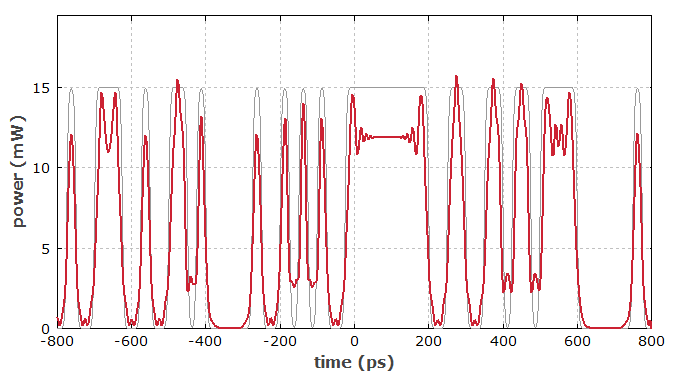Data Transmission Through a Germanosilicate Fiber, Simulation Model (original) (raw)

RP Fiber Power — Simulation and Design Software for Fiber Optics, Amplifiers and Fiber Lasers
Description of the Model
Here, we simulate the transmission of a data signal in a glass fiber. The mode parameters of the fiber are calculated with the mode solver from a given germanium doping profile.
A pseudorandom NRZ (non return to zero) signal with 40 Gbit/s is created and propagated through 5 km of the fiber.
Results
Figure 1 shows the signal before and after the fiber. There are substantial signal distortions, caused mainly by the chromatic dispersion and to some extent also from the Kerr nonlinearity.

Figure 1: Time-dependent power of the pseudorandom bit sequence before and after the fiber.
Figure 2 shows an eye diagram. As the “eye” is wide open, the signal could still be well detected. For twice the fiber length (not shown here), this would be different.

Figure 2: Eye diagram for the telecom signal after the fiber.
Of course, one could easily include further aspects in the simulation, for example a chirp of the input signal.